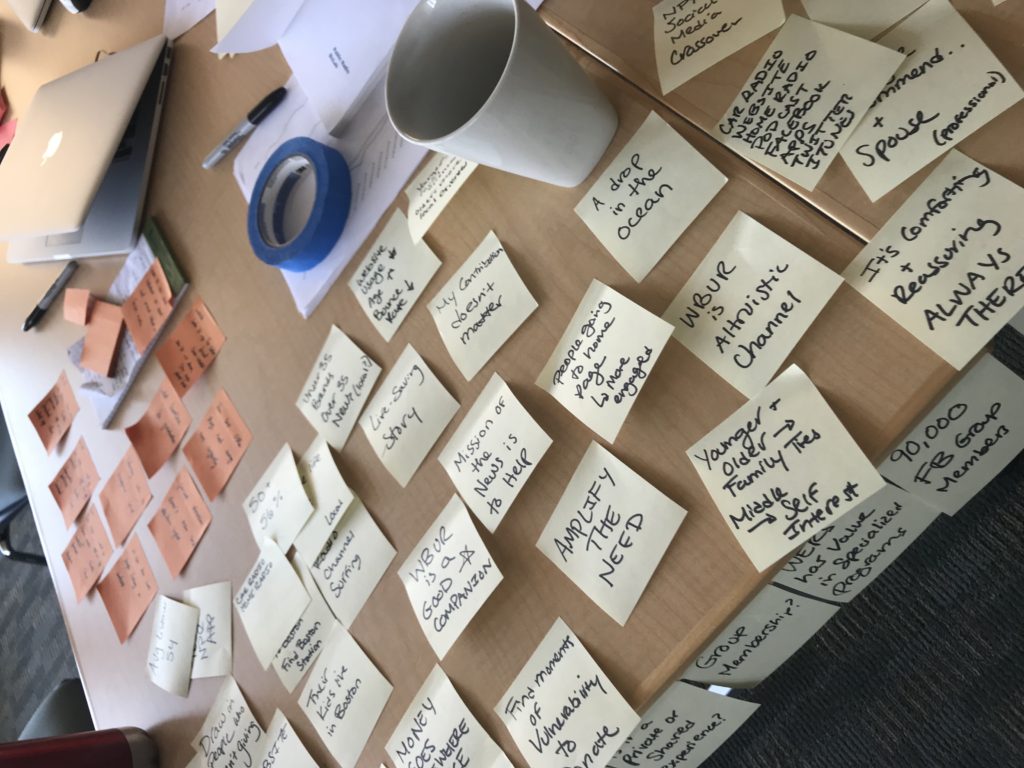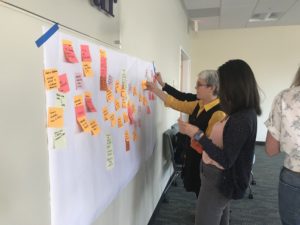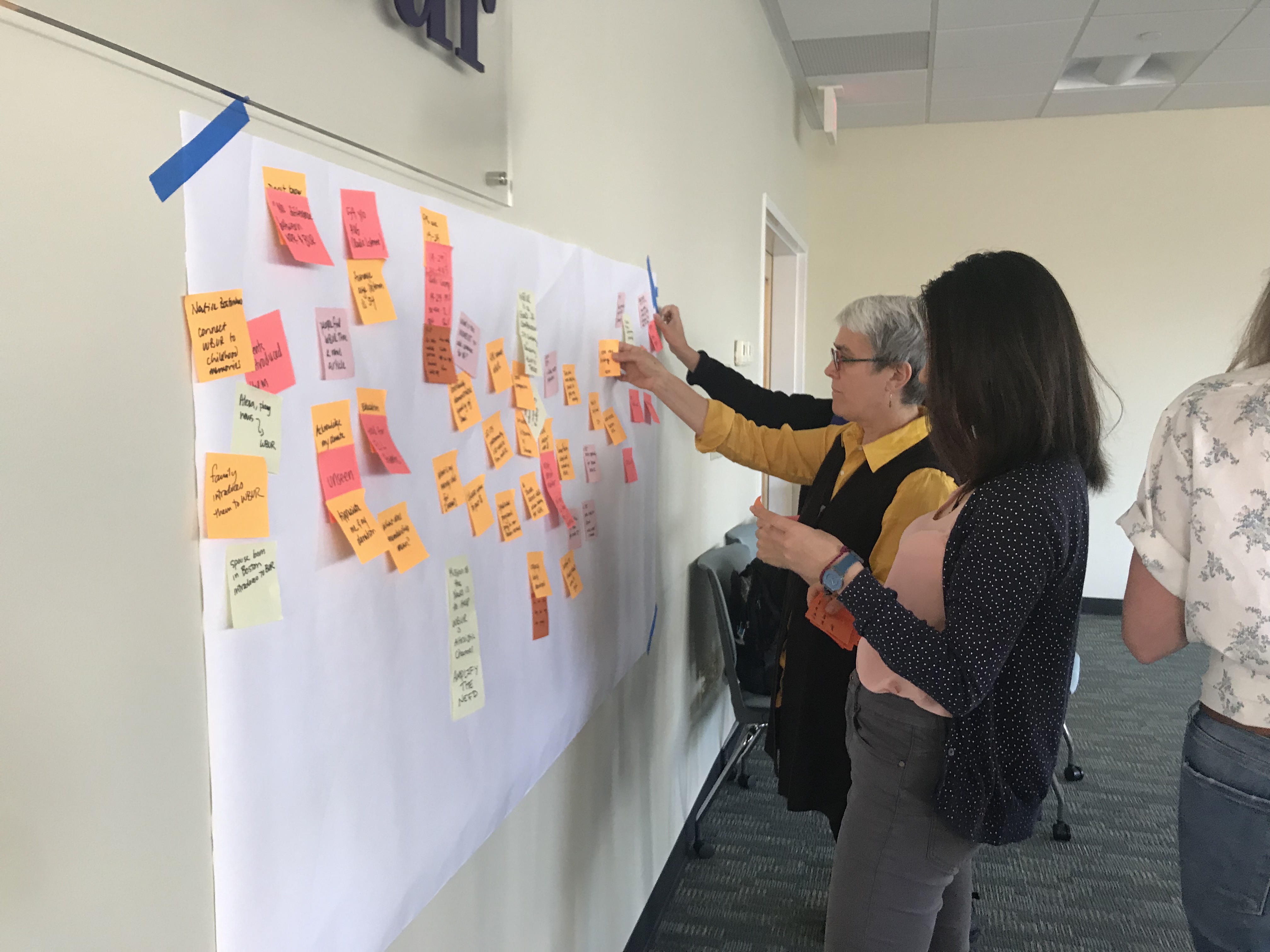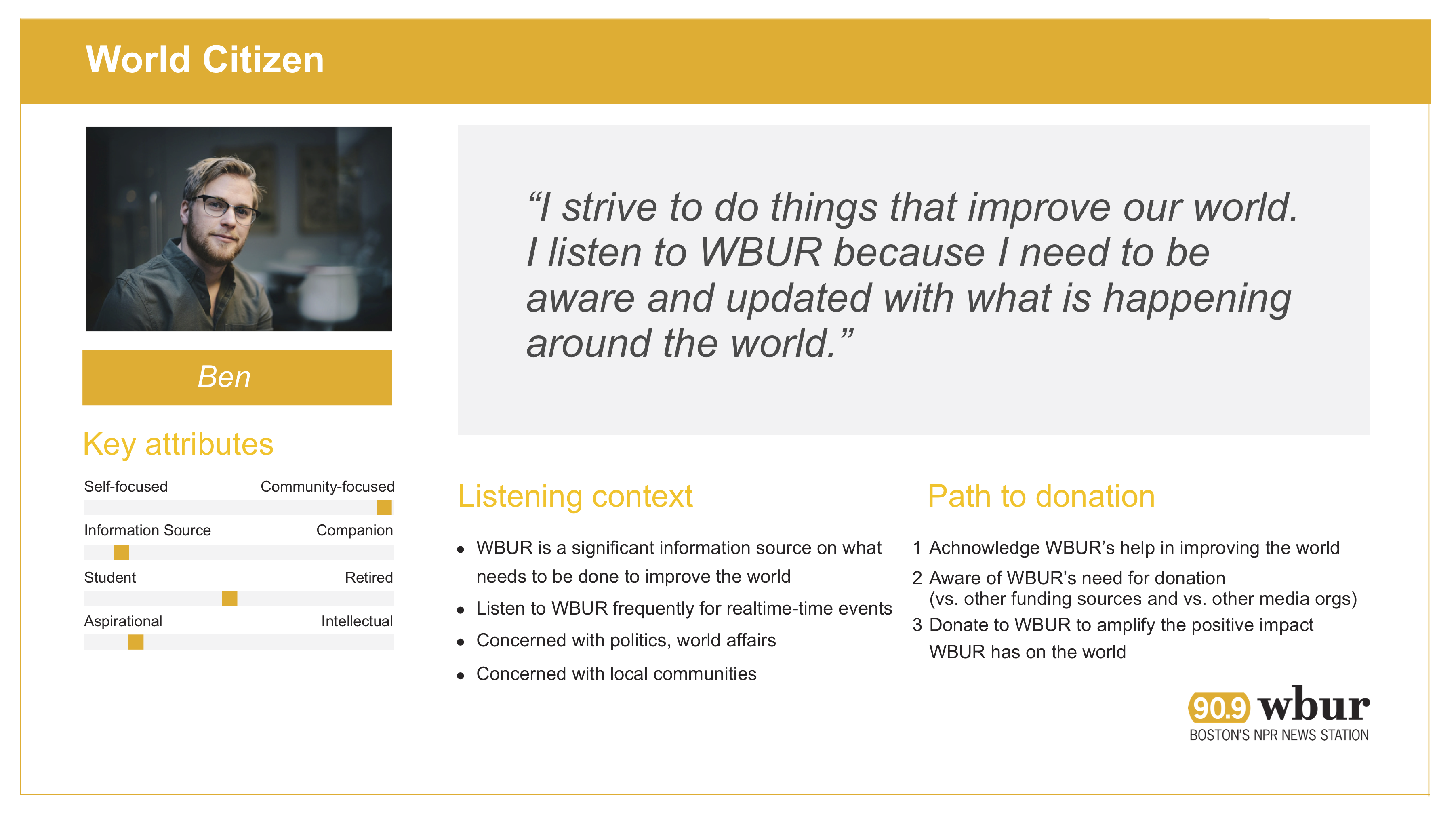[This is the 2nd blog post is written by BizLab Fellow Wendi Ding, sharing the discoveries from her Summer 2018 experiment.]
There are 500,000 unique individuals listening to WBUR each week. How do we communicate effectively with each of them about why they listen to WBUR, what makes them loyal to the program, and what drives them to donate? Our answer is to use personas. A user persona is a fictional, yet realistic, description of a person who uses your product. In this case, someone who consumes WBUR’s content. By creating a set of representative personas, we are able to reduce our audience down to a “manageable and memorable set of characters,” and then design unique messages for each character in order to explore how to reach all our audience members.
Creating WBUR Personas


At the beginning of the summer, to inform all of BizLab’s work, we pooled what we know about our listeners from multiple sources. BizLab’s survey research in 2017 provided hundreds of data points and listener quotes (a summary of this data is the BizLab Let’s Talk Survey “Opportunity Report”). We also met with WBUR’s “Sounding Board,” a group of young professionals loyal to WBUR who offer up quarterly feedback on different initiatives. Lastly we dove into wbur.org‘s web analytics to understand behavioral trends in terms of digital consumption of our content. To break apart and reassemble our understanding of listeners into new forms, we wrote every observation about our listeners’ values and consumption onto sticky notes (Fig 1).
Through affinity mapping, we grouped the sticky notes into themes (Fig 2), and identified 3 different personas based, not on demographics, but based on their motivations for listening to WBUR. Different from a traditional UX or marketing persona (UX personas vs. marketing personas: what’s the difference?), personas in this experiment include the information that associated with these questions:
- Why does he/she listen to WBUR?
- How does he/she listen to WBUR?
- What does WBUR mean to him/her?
The three personas are the Aspirational Learner, the World Citizen, and the Lifelong Learner.
Anna, The Aspirational Learner
Anna likes to learn about new things that are inspiring and expand her horizons. She comes to WBUR for deep, intellectual content, sometimes with an explicit education goal and other times to be inspired. Typically she listens to WBUR on-demand, seeking out programs and content on topics she wants to learn about. We describe her as an “Aspirational Learner” because she is focused on self-improvement and her own education when she accesses our content.
We pulled Anna’s traits from real audience responses to a survey question, “How did you discover WBUR?” such as:
“I was doing a paper in school on how laws often punish the poor and every time I turned on WBUR, there was a story I could use. Since then I’ve been a faithful listener.”
“A college professor required my class to listen to public radio for an hour a day and keep a journal.”
Ben, The World Citizen
Ben is focused on current events and has a strong commitment to staying on to of the news, in order to be an informed citizen and voter. WBUR helps him to keep updated with what is happening around the world and give him the sense of being part of a larger community. He listens to WBUR frequently for real-time updates on events.
Ben was drawn from listener quotes like:
“College professor at University of Vermont told us about NPR quality news and when I moved back to Boston it was a natural transition for news.”
“I was looking for a fact-based place to get news and analysis.”
“Looking for honest journalism.”
Mary, The Lifelong Listener
Mary has been listening to WBUR for many years and has a strong emotional connection to the brand of WBUR, the local hosts, and the content. She was introduced to NPR as a child, and has many positive associations of listening during car trips, long periods at home, and during commutes. She typically has WBUR playing on the radio all day, either at her home or her office. WBUR is her constant companion.
Validating these Personas
I spent my summer at WBUR designing an experience to validate these personas exist amongst our active listeners. While these personas were created from real listener data, there is always a distinction between what people say versus what they do. So I designed a test to figure out if people would a) self-select into these different personas and b) engage more with messages designed for their specific persona. Stay tuned for my next blog post where I describe how we evaluated our personas.



